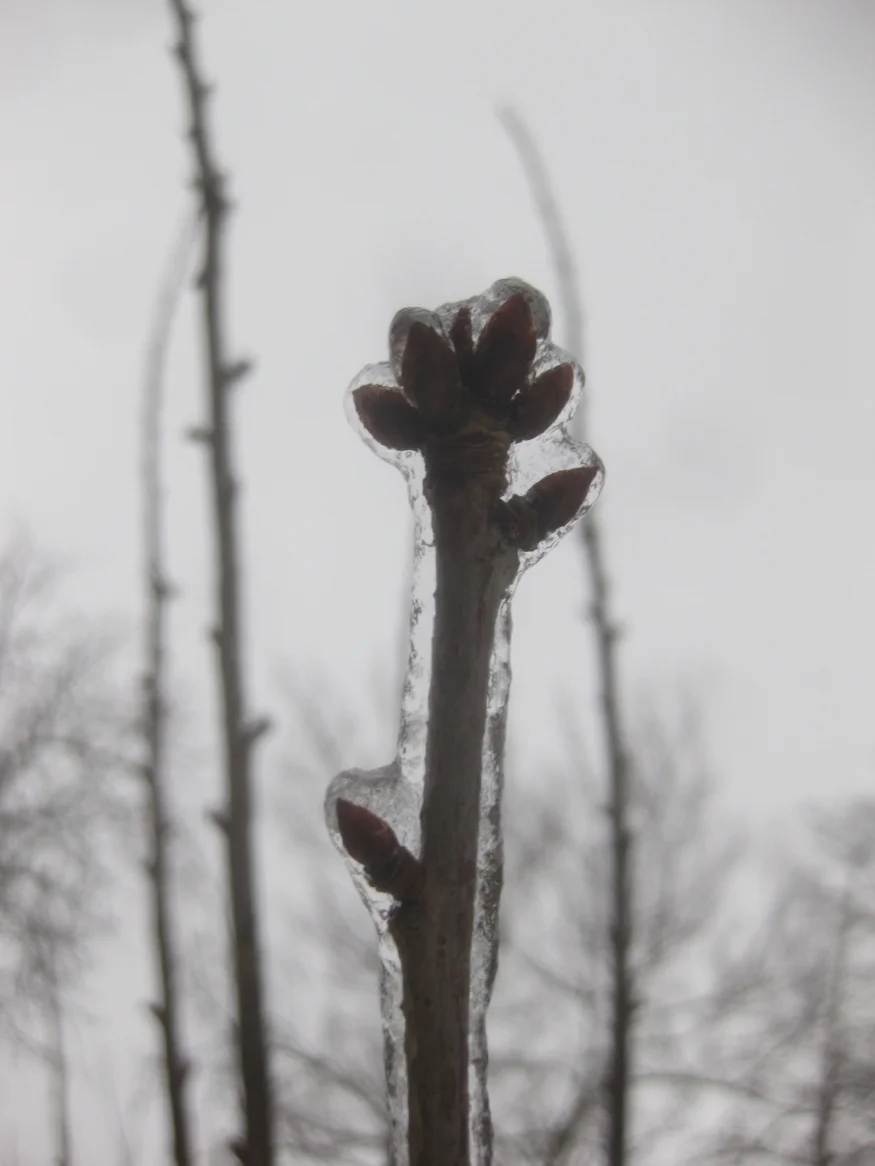Winter Damage to Fruit Trees
We have had quite a cold winter here in Portland, OR. Several freezing rain storms, followed by a dump of snow, and a city lacking infrastructure to deal with the ensuing road conditions has put a halt to work for us. So here I am spending this snowy day writing instead of our typical winter activity, pruning. I imagine some of you are wondering how your trees will fare in this weather. Or more specifically, how you can limit the damage these low temperatures can have on your fruit trees.
Low temperatures can impact fruit trees primarily in three ways:
1) Winter Scald
2) Broken branches from improper training
3) Killing Frosts during bloom time
Winter Scald is caused from fluctuating temperatures and the movement of sap through the cambium layer. In Portland, it is typically found on the South side of the tree. During the day when the low angle of the winter sun is shining on the bark (south side in the northern hemisphere), the tree begins to warm on that side. As the trunk begins to warm, sap moves into the cambium layer. When the temperature drops at night, this water may freeze, and thereby expand and break the cellular structure in the cambium layer. This causes the tissues to die back. The primary way to prevent winter scald is to paint the trunk of the trees with a mix of watered down white paint. Another option is to wrap the tree with a white tree guard. Trees that are particularly susceptible are those with thin and darker colored bark such as plums, cherries, peaches, and apricots.
Broken Branches during a snow storm can result from improper training of crotch angles when the tree was young. Tree branches should be trained to an open angle of between 45 and 60 degrees while the tree is young. When not trained properly bark inclusion may occur, resulting in a weak attachment. When an ice storm or heavy snow load bears down on the tree the results can be fatal, splitting the tree down the middle. A heavy fruit load during the summer can also cause branches with weak attachments to split or break. During winter storms trees that are particularly susceptible are cherries, plums, crab apples, and apricots because typically their fruit loads are less heavy and they are not used to bearing a lot of weight.
Killing Frosts are another way your fruiting plants may be injured. In the spring as trees begin to bloom if the temperature drops to freezing, the blossoms may die, or the fragile stamens and pistols may freeze. The result is that there will be very limited, if any, fruit production that year. However, not all trees bloom at the same time. Planting a diversity of fruit species and varieties can ensure that you will have home grown fruit to enjoy regardless of late spring killing frosts. Additionally, planting trees that require a higher amount of chill hours before breaking dormancy will prevent them from blooming too early. For more specific information on tree bloom and killing frost see this link.


